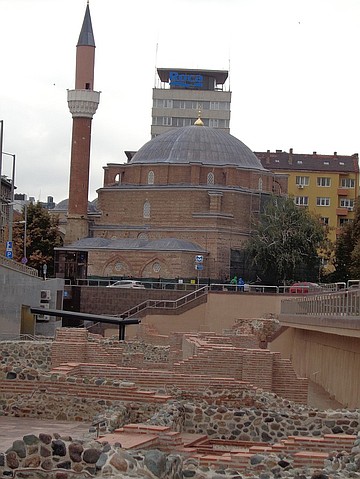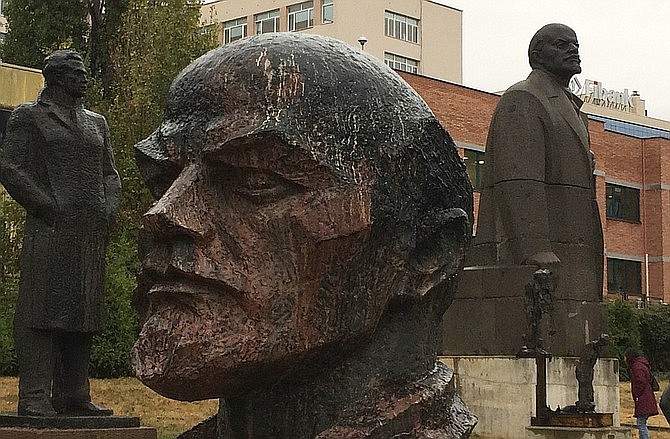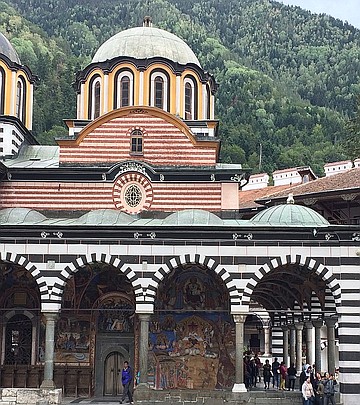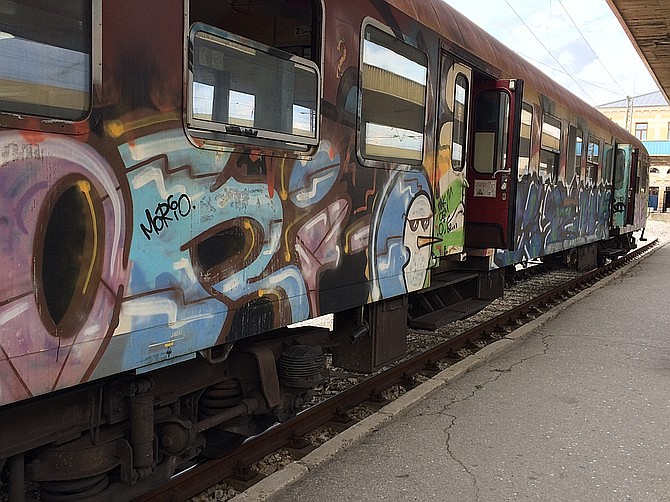 Facebook
Facebook
 X
X
 Instagram
Instagram
 TikTok
TikTok
 Youtube
Youtube

"Bulgaria? Nobody goes there!" said my husband when I mentioned it.
Admittedly Bulgaria had never really been high on my list of places to visit, but fate brought me an opportunity to meet an old friend in the capital, Sofia. Like many Westerners, I imagined a gritty, gray and boring post-Communist, post-Yugoslavia Balkans. However, I had once read that Bulgarians nod their heads for "no" and shake them for "yes", and I thought it might be interesting in an offbeat way to at least see that for myself.

I was surprised to find that Bulgaria is also a place with ancient history and spirituality like in Rome and Greece, walkable cities with ornate architecture and good wine like western Europe, and Middle Eastern flair inherited from centuries in the Ottoman Empire.
The more I looked the more I wanted to see.
Unless you're a scholar of ancient history, you might not realize that Bulgaria was part of the Roman Empire from around the 1st century. Recently-excavated archaeological remains were woven into the fabric of modern Sofia. The Serdika metro station complex was built around exhibits of restored 4th century Roman ruins in a kind of open-air archaeological exhibit, free to the public, that spreads out for blocks below current street level. Locals mostly just walked past on their way elsewhere, but to me being able to walk around inside the exhibit was a treasure.
Another example of accessible ancient history and spirituality are the early Christian churches. The Rotunda of St. George, still active since the 6th century, sits in a courtyard of buildings that grew up all around it. The Church of "Sveta Sofia," the city's namesake, is a charming exposed brick church built on top of a 4th century necropolis, which I couldn't resist the chance to explore.
Walking down the fashionable Moskovska street near the embassies and museums, I felt like I could have been walking in Paris or Vienna with all the 19th century classic architecture, elegant green spaces and outdoor cafes. Watching the elaborate changing of the guard at the Presidential Palace, I could hardly believe that only a short time ago this place was behind the iron curtain.

The Museum of Socialist Art is a hidden gem a little off the beaten path. A UNESCO World Heritage site, this museum with its outdoor sculpture garden is one of many all over eastern Europe grappling with the remains of its Communist past. The outdoor garden was like a cemetery for statues brought down in the 1990s. Inside there were paintings, etchings and video footage from period propaganda films which
captured the spirit of that time, and put it into a historical context. Seeing umbrella-covered tables on the second floor terrace cafe overlooking the sculpture garden, I took a break with an espresso and a paper packet of roasted nuts to let it all sink in.
Another hidden gem a little further afield is Kambanite Peace Bells Park. Dating back to the early 1980s, the monument was a little rough around the edges, but I found it particularly interesting to see bells from countries that don't exist anymore, like East and West Germany, Yugoslavia and USSR.

Tucked away in the mountains a few hours away was Rila Monastery, another UNESCO World Heritage site. Although there had been a monastery here since the 10th century, the prominent, colorfully striped Church of the Nativity dates to the 19th century. Contrasting with the dark church interior, vibrant murals completely covered the inside of the portico with folk-art exuberance and masterful technique. It was incredible! We didn't have time to do much hiking, but the nature park surrounding the monastery was spectacular.
Right outside the rear gate we found a little cafe with an incredible view of the mountain gorge below. At a big, chunky, outdoor wooden table we ordered traditional dishes and ate family-style, starting with pitka bread, a carafe of a local red wine, and salads featuring kisel mlyako, the famous Bulgarian yogurt. My favorite dish, a sizzling cast-iron called a sach, was like Bulgarian fajitas.
Now emerging as an artistic and cultural capital, Plovdiv has layers of history that trace even further back than in Sofia. The 14th century Dzhumaya Mosque, said to be the oldest one in Bulgaria, was built on the site of former church and under that a Roman stadium, parts of which are still there. Since the mosque was open to visitors between prayer times, I wrapped my scarf around my head and took a look inside. The decorative stonework of the minaret and rich wood carving at the entrance belied the modest hand-painted murals inside.
The creative hub of Plovdiv is the Kapana quarter. We roamed the extensive network of medieval streets, festooned with colored flags and packed with cafes. Roman theatre remains were built into a venue that still hosts live music and theatre events, keeping it relevant in the modern age.
Within Sofia, we used public transit, and all the historical and cultural core sites were within an easy walking distance of the Serdika metro station. Attractions a little further afield were close enough to get to by metro and city bus. Some of the vehicles looked a little worn, but I found the transit system to be cheap and reliable in general, if a little tricky at times.

As in the rest of Europe, I found that rail was a direct and economical way to get between cities. As expected in an emerging free-market country, though, not all train carriages have been upgraded recently — particularly on the local trains. There was no free WiFi or cafe car, and the onboard facilities were a bit primitive by western European standards. However, we got safely to our destinations roughly on time for very little money.
Yes, people did the yes/no body language in reverse, but like many things in Bulgaria, social customs are quickly changing to merge with the rest of Europe.


"Bulgaria? Nobody goes there!" said my husband when I mentioned it.
Admittedly Bulgaria had never really been high on my list of places to visit, but fate brought me an opportunity to meet an old friend in the capital, Sofia. Like many Westerners, I imagined a gritty, gray and boring post-Communist, post-Yugoslavia Balkans. However, I had once read that Bulgarians nod their heads for "no" and shake them for "yes", and I thought it might be interesting in an offbeat way to at least see that for myself.

I was surprised to find that Bulgaria is also a place with ancient history and spirituality like in Rome and Greece, walkable cities with ornate architecture and good wine like western Europe, and Middle Eastern flair inherited from centuries in the Ottoman Empire.
The more I looked the more I wanted to see.
Unless you're a scholar of ancient history, you might not realize that Bulgaria was part of the Roman Empire from around the 1st century. Recently-excavated archaeological remains were woven into the fabric of modern Sofia. The Serdika metro station complex was built around exhibits of restored 4th century Roman ruins in a kind of open-air archaeological exhibit, free to the public, that spreads out for blocks below current street level. Locals mostly just walked past on their way elsewhere, but to me being able to walk around inside the exhibit was a treasure.
Another example of accessible ancient history and spirituality are the early Christian churches. The Rotunda of St. George, still active since the 6th century, sits in a courtyard of buildings that grew up all around it. The Church of "Sveta Sofia," the city's namesake, is a charming exposed brick church built on top of a 4th century necropolis, which I couldn't resist the chance to explore.
Walking down the fashionable Moskovska street near the embassies and museums, I felt like I could have been walking in Paris or Vienna with all the 19th century classic architecture, elegant green spaces and outdoor cafes. Watching the elaborate changing of the guard at the Presidential Palace, I could hardly believe that only a short time ago this place was behind the iron curtain.

The Museum of Socialist Art is a hidden gem a little off the beaten path. A UNESCO World Heritage site, this museum with its outdoor sculpture garden is one of many all over eastern Europe grappling with the remains of its Communist past. The outdoor garden was like a cemetery for statues brought down in the 1990s. Inside there were paintings, etchings and video footage from period propaganda films which
captured the spirit of that time, and put it into a historical context. Seeing umbrella-covered tables on the second floor terrace cafe overlooking the sculpture garden, I took a break with an espresso and a paper packet of roasted nuts to let it all sink in.
Another hidden gem a little further afield is Kambanite Peace Bells Park. Dating back to the early 1980s, the monument was a little rough around the edges, but I found it particularly interesting to see bells from countries that don't exist anymore, like East and West Germany, Yugoslavia and USSR.

Tucked away in the mountains a few hours away was Rila Monastery, another UNESCO World Heritage site. Although there had been a monastery here since the 10th century, the prominent, colorfully striped Church of the Nativity dates to the 19th century. Contrasting with the dark church interior, vibrant murals completely covered the inside of the portico with folk-art exuberance and masterful technique. It was incredible! We didn't have time to do much hiking, but the nature park surrounding the monastery was spectacular.
Right outside the rear gate we found a little cafe with an incredible view of the mountain gorge below. At a big, chunky, outdoor wooden table we ordered traditional dishes and ate family-style, starting with pitka bread, a carafe of a local red wine, and salads featuring kisel mlyako, the famous Bulgarian yogurt. My favorite dish, a sizzling cast-iron called a sach, was like Bulgarian fajitas.
Now emerging as an artistic and cultural capital, Plovdiv has layers of history that trace even further back than in Sofia. The 14th century Dzhumaya Mosque, said to be the oldest one in Bulgaria, was built on the site of former church and under that a Roman stadium, parts of which are still there. Since the mosque was open to visitors between prayer times, I wrapped my scarf around my head and took a look inside. The decorative stonework of the minaret and rich wood carving at the entrance belied the modest hand-painted murals inside.
The creative hub of Plovdiv is the Kapana quarter. We roamed the extensive network of medieval streets, festooned with colored flags and packed with cafes. Roman theatre remains were built into a venue that still hosts live music and theatre events, keeping it relevant in the modern age.
Within Sofia, we used public transit, and all the historical and cultural core sites were within an easy walking distance of the Serdika metro station. Attractions a little further afield were close enough to get to by metro and city bus. Some of the vehicles looked a little worn, but I found the transit system to be cheap and reliable in general, if a little tricky at times.

As in the rest of Europe, I found that rail was a direct and economical way to get between cities. As expected in an emerging free-market country, though, not all train carriages have been upgraded recently — particularly on the local trains. There was no free WiFi or cafe car, and the onboard facilities were a bit primitive by western European standards. However, we got safely to our destinations roughly on time for very little money.
Yes, people did the yes/no body language in reverse, but like many things in Bulgaria, social customs are quickly changing to merge with the rest of Europe.
Comments